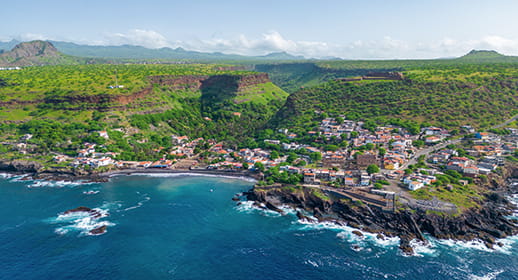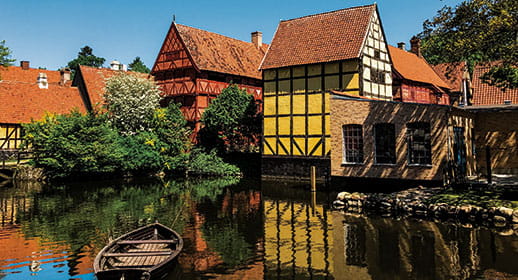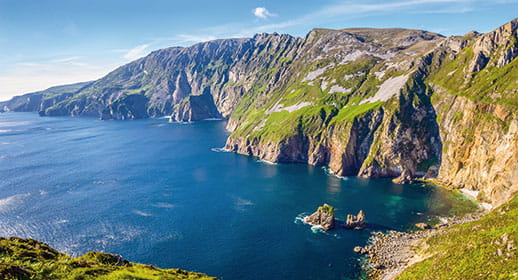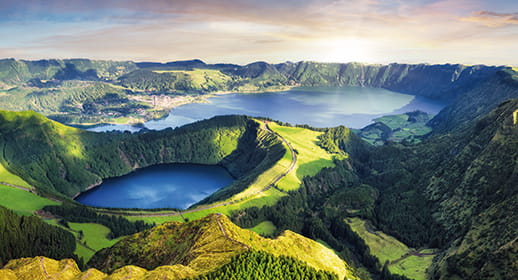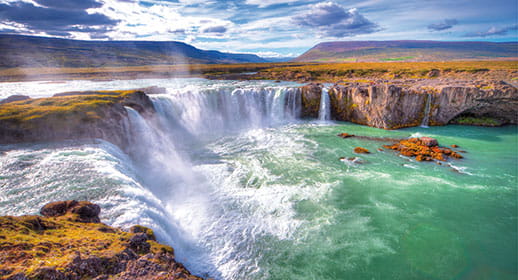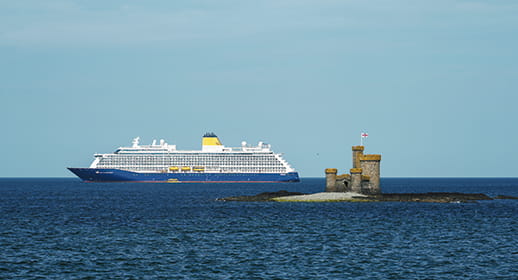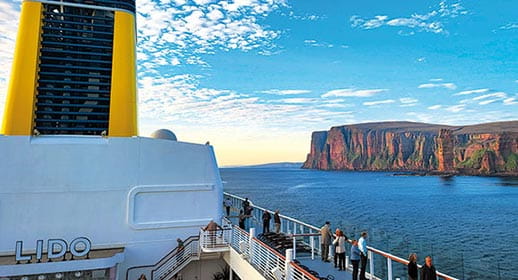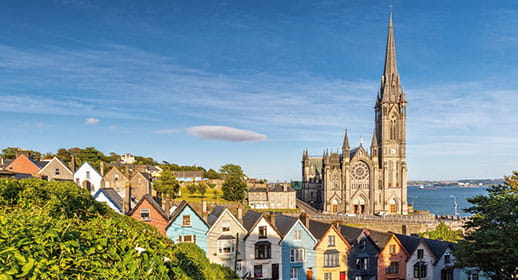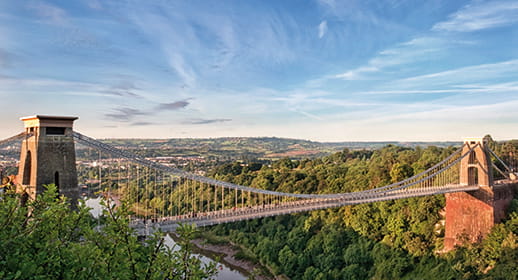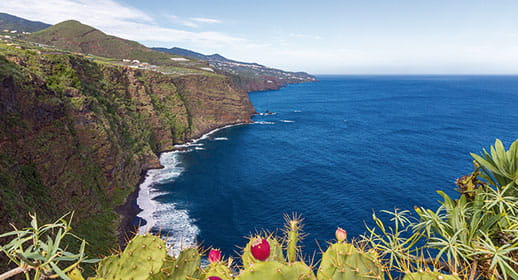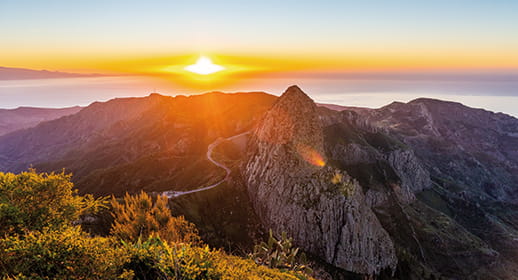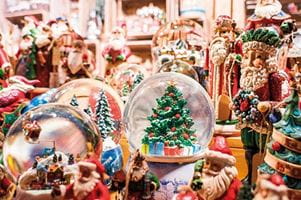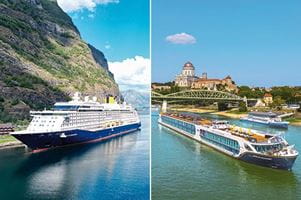Experiences
Orca’s work with Saga

Picture this: you’re standing on deck of a cruise ship, drink in hand as you look out across the sparkling waves to the horizon, only to see a whale breach or a pod of dolphins fly through the air in their synchronised ballet.
What does ORCA do?
'We’re dedicated to the protection of whales, dolphins and porpoises, collectively known as cetaceans, in waters across the globe,' says Lucy, who started out as a citizen scientist herself, a volunteer supporting ORCA’s work. 'Our mission is to give everyone who cares about the marine environment the opportunity to take an active role in safeguarding it. Anyone can do this, whatever their background.'
What discoveries has it made?
Over the years, teams and passengers have recorded tens of thousands of animals, including Beluga whales and Blue whales, even tracking individual whales on their long migrations from the Caribbean to the Arctic. Recently, ORCA has been involved in identifying critically important habitats for marine mammals across the entire North-East Atlantic, helping to influence legislation in the UK and overseas protecting marine life threatened by shipping, fishing and pollution.
How does it help being involved with Saga?
It’s thanks to Saga, ORCA’s longest-standing cruise partner, that the charity was first able to expand beyond UK waters, now putting teams of four volunteer Marine Mammal Surveyors aboard selected cruises. 'It’s a really cost-effective way of gathering a huge amount of data at any single time, and we’re not placing additional pressures on the marine environment either,' Lucy explains. 'The partnership allows us to monitor remote places, to reach otherwise inaccessible habitats. Then we can take all that information and inform policy makers and government bodies and make a real change, as well as pointing out all the incredible animals to everyone on board.'
What can Saga passengers learn on a cruise that has teamed up with ORCA?
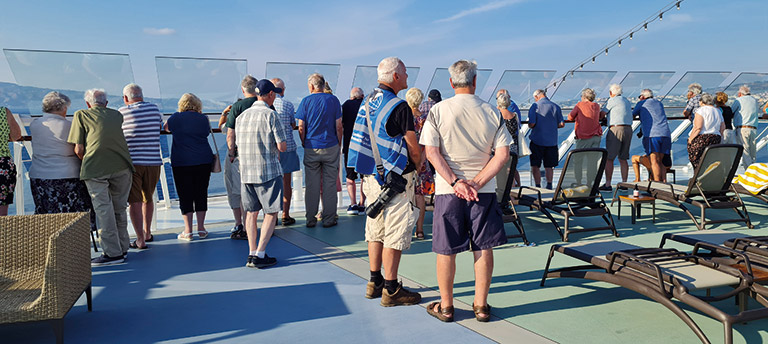
There are many ways for passengers to get involved, from lectures by the ORCA team about their work and local marine life to informal workshops, where guests can bring in photos of marine creatures to be identified. It’s also easy for passengers to get hands on. 'We’re on the decks collecting data, so anyone can join us at any time,' says Lucy. 'It’s hard to spot these animals at sea so the team can help with this, so that when people are relaxing, they can watch a whale swim by.
'Alternatively people can be part of the team by downloading our free app ORCA OceanWatchers, and start collecting vital data themselves. Some have even gone on to do more training and become part of our dedicated ORCA teams.'
One of Lucy’s own most memorable moments was showing a guest her first whale, after years of unsuccessful whale-watching trips. 'To have that moment with her, to be able to watch it, we both just stood there in tears.'
Sometimes, it’s about being in the right place at the right time, she adds. 'The Cuvier’s beaked whale dives to 3,000m, spends three hours under the water searching for squid, then comes to the surface for just a few minutes. That’s why we love having the guests out with us – the more eyes on the oceans, the better.'
What you can see on a Saga cruise with ORCA on board
Here’s what to look out for, along with seals, seabirds, turtles, sharks and rays...
Humpback whales
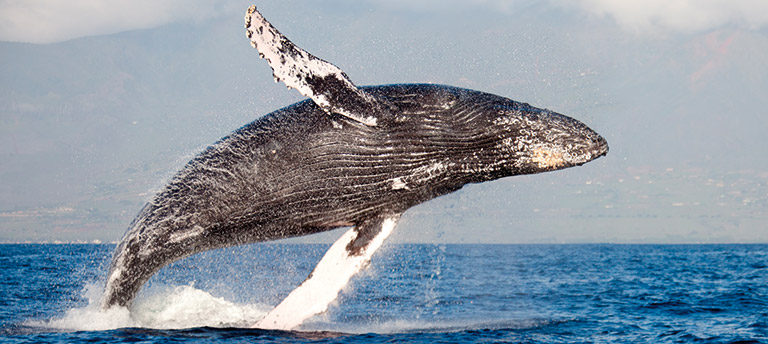
Humpback whales have one of the world’s longest migrations, travelling thousands of miles every year. In the northern hemisphere, they enjoy the warm waters of the Caribbean during the winter, before journeying north to Norway and Iceland for the summer to feed on the huge shoals of herring. You could spot these whales on our Norway and Midnight Sun or Iceland Explorer cruises during the summer months.
Sperm whales

If you’re hoping to spot Sperm whales, the Azores is among the world’s biggest hotspots, so Saga’s Islands of the Azores and Madeira cruise is ideal. Female sperm whales tend to stay in tropical and subtropical waters year-round, including young males, in family groups. Look out for male Sperm whales in Arctic waters too, as they head north to Norway and Iceland when they start to reach maturity at around 10 years old, only heading back to breed once they are in their late twenties.
Orcas (Killer whales)
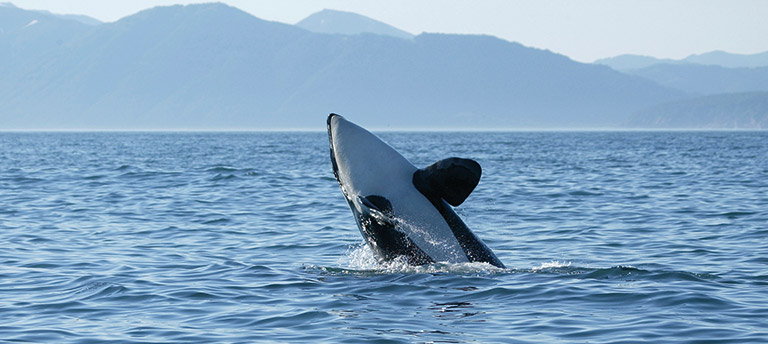
Orcas can be spotted year-round in Iceland and Norway but also from cruises around the British Isles. A single pair of male orcas remain from the UK’s own West Coast Community, but some Icelandic orcas venture as far south as Northumberland and Iberian orcas have been spotted in Cornwall. Scotland’s islands, including Orkney, Shetland and the Hebrides, are among the best places to see them.
Minke whales
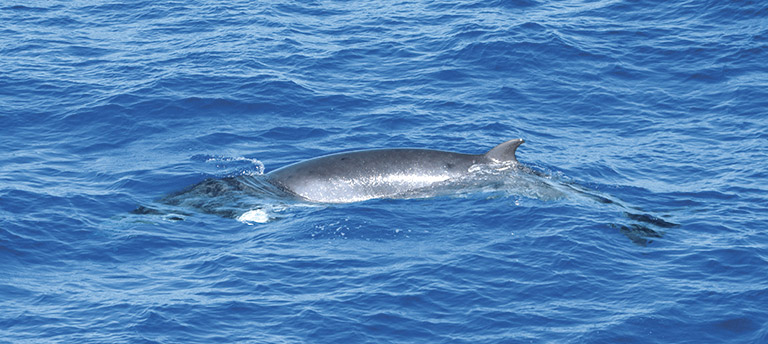
You can spot Minke whales all around the UK too, one of 28 species of cetacean living in our waters. The Hebrides are a particular hotspot, as the narrower channels make it easier to see them during feeding. Our British Isles Explorer and From the Cornish Coast to the Orkneys cruises gives you multiple opportunities to look for them.
Fin whales

Fin whales are the second-largest whale on the planet, reaching around 27m long – only a few metres smaller than a Blue whale. These astonishing creatures can be found swimming through the Irish Sea up to Norway and Iceland, and usually in the Bay of Biscay. Spot them from the Ireland’s Coastal Gems cruise, or cruises from the UK to the Canary Islands and Azores.
Deep diving beaked whales
These rare and elusive whales are one of the hardest marine creatures to spot but you needn’t travel far to spy one, as they live off the west coast of Ireland. Sea canyons also provide the perfect environment for them in the Bay of Biscay, along the northern Spanish and Portuguese coast, and routes to the Azores and Canary Islands.
Pilot whales
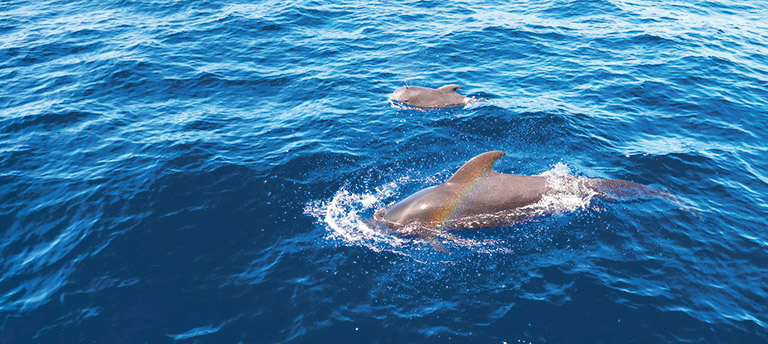
The Canary Islands are among the best places to see Pilot whales (a misnamed species that’s actually a large dolphin). These beautiful, glossy, black creatures form famously tightly bonded family groups, which stay together until death. Our Contrasts of the Canaries, or Canary Islands Vistas cruises are ideal.
Blue whales
The largest creature on earth, spotting a Blue whale is a unique experience. Like Humpback whales, they migrate north during summer and south in winter, so you could see them in the Azores and off the coast of Portugal during the winter months, and in Iceland during the summer.
Dolphins

You’ve got a good chance of seeing dolphins on all ORCA cruises. The Caribbean is home to species including Spinner dolphins, which twist and dance across the water, as well as Fraser’s dolphins and Bottlenose dolphins, while striped dolphins are found in the Canary Islands. The UK also has multiple dolphin species in its waters, including Common dolphins, with a yellow hourglass pattern on their side. Our own Bottlenose dolphins, far bigger than their slender Caribbean counterparts, live in Cardigan Bay in Wales, in Northumberland and the Moray Firth.
Harbour porpoises
Europe’s only species of porpoise, the Harbour porpoise is also our smallest species of cetacean, found around the UK and in large numbers in the Norwegian fjords. The Northern Lights and Festive Delights cruise takes you through the fjords with ORCA on board, as does the Norway and the Midnight Sun cruise.
Find out more about ORCA cruises and cruising with Saga.
The opinions expressed are those of the author and are not held by Saga unless specifically stated.
The material is for general information only and does not constitute investment, tax, legal, medical or other form of advice. You should not rely on this information to make (or refrain from making) any decisions. Always obtain independent, professional advice for your own particular situation.

 Lucy Babey, ORCA's Director of Programmes
Lucy Babey, ORCA's Director of Programmes